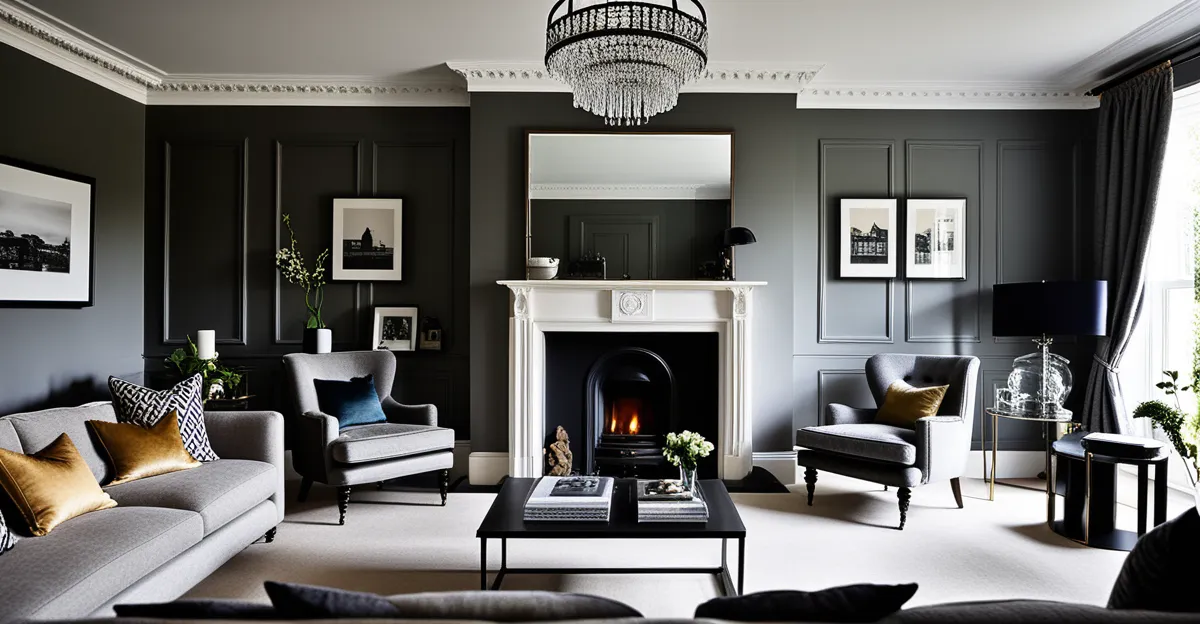Actionable Strategies for Blending Modern Decor with Classic British Architecture
Blending modern decor with classic British interiors requires a careful balance between honoring historical features and incorporating contemporary style. A key strategy involves synchronizing modern decor choices with the architectural details that define British heritage homes. For example, maintaining the integrity of original mouldings, fireplaces, or wood paneling while introducing sleek furnishings can create an engaging dialogue between old and new.
Overcoming challenges such as awkward room proportions or clashing styles often means focusing on practical interior design tips like using neutral palettes that allow statement pieces to shine, or selecting furniture scaled to the room’s original dimensions. When blending old and new, it’s important to avoid overwhelming period features; instead, highlight them through contrast—like pairing minimalist, modern chairs with an ornate Victorian console.
Interior designers specializing in British homes emphasize respecting the home’s history while innovating. They recommend layering textures and materials thoughtfully and choosing modern elements that complement rather than compete with architectural character. This approach ensures a cohesive and sophisticated blend that celebrates both eras harmoniously.
Selecting Contemporary Furnishings that Complement Period Details
Choosing contemporary furnishings that enhance rather than overshadow period features is crucial when decorating classic British interiors. Furniture selection should aim to accentuate traditional architectural elements such as ornate cornices, fireplaces, or wood paneling. To achieve this, prioritize pieces with clean lines or subtle detailing that complement period aspects without competing for attention.
Balancing proportion and scale is another essential consideration. Classic British homes often have generous ceiling heights and intricate room layouts. Selecting furniture scaled appropriately ensures harmony between the modern and historic elements. Oversized contemporary sofas or chairs risk dominating the room, detracting from original craftsmanship.
Material and finish choices also play a vital role in blending old and new. Opt for natural woods, subtly distressed leathers, or brushed metals that acknowledge the texture and patina of heritage materials. These finishes enhance cohesion without compromising historic character.
Interior designers specializing in British homes recommend mixing styles carefully—pairing a sleek, mid-century modern chair next to a Victorian fireplace can make both elements stand out positively. Thoughtful furniture selection fosters a seamless integration of contemporary furnishings into period settings.
Modern Colour Schemes for Heritage British Interiors
Finding the right modern colour palettes for classic British homes requires sensitivity to traditional room features like mouldings and paneling. The best paint choices harmonise contemporary trends with period details rather than overpower them. Neutral tones such as soft greys, creams, and muted taupes provide a subtle backdrop that respects heritage while updating the space.
How can accent colours enhance period details? Using richer hues like deep blues, moss greens, or burnt oranges selectively on walls or decorative trims draws attention to architectural elements without overwhelming. This technique highlights the craftsmanship embedded in features like cornices or dado rails, creating a deliberate interplay between old and new.
Strategic paint and wallpaper choices also contribute to cohesion. Wallpapers with classic patterns reimagined in modern colours can modernise a space while nodding to history. Interior designers recommend layering finishes—matte walls contrasted with glossy trims—to bring texture and depth that elevate both contemporary and period styles effectively.
By adapting colour schemes thoughtfully, it’s possible to blend old and new with style and respect, making modern palettes an essential tool in transforming British heritage interiors.
Integrating Contemporary Lighting and Technology
Integrating modern lighting in classic British interiors demands a balance between enhancing functionality and preserving historic charm. How can you install modern lighting without detracting from period features? The key is choosing fixtures that echo vintage aesthetics while offering updated illumination. For example, antique-style chandeliers fitted with LED bulbs maintain character but improve energy efficiency and brightness.
Smart home integration must be discreet. Many British interiors technology solutions now allow seamless control of lighting, heating, and security without visible gadgets. Wireless systems minimise invasive wiring, preserving plaster mouldings and wall panelling. This approach keeps the room’s historical fabric intact while offering modern convenience.
Practical interior design tips include layering different light sources—such as wall sconces and floor lamps—to create adaptable atmospheres suited to various activities. Using dimmable lights highlights architectural details subtly instead of harshly illuminating entire rooms.
Interior designers specialising in blending old and new recommend selecting technology that complements traditional materials. For example, brushed brass or wrought iron finishes on light switches and fittings reinforce period style even while providing modern performance. This ensures a cohesive and sophisticated integration of technology within heritage spaces.
